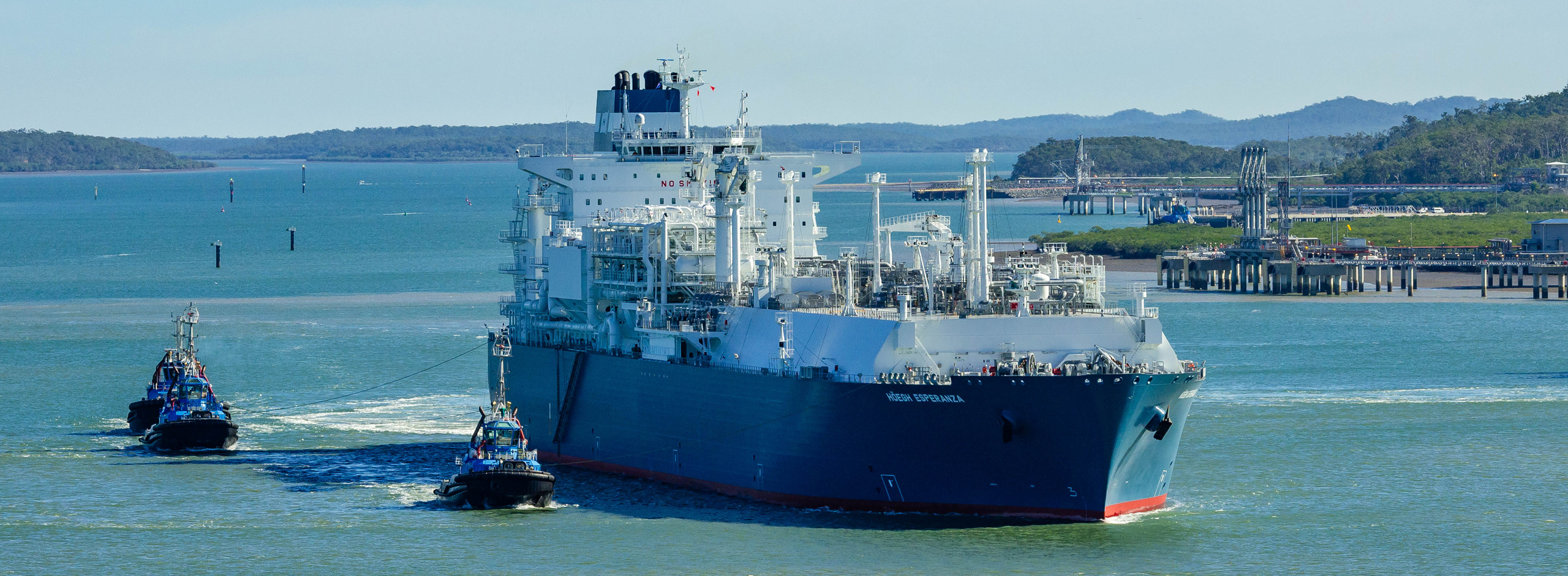Floating Storage and Regasification Unit (FSRU)
The "Höegh Esperanza" is an LNG tanker that has been operating as a Floating Storage and Regasification Unit (FSRU) since mid-December 2022 at the jetty in Wilhelmshaven. The FSRU "Höegh Esperanza" is permanently moored at a pier in Wilhelmshaven Harbor and will receive LNG shipments from incoming LNG tankers from around the world in the coming years. The regasified natural gas will then be directly fed into the German national gas distribution network via the newly constructed Wilhelmshavener Anbindungsleitung (WAL) gas pipeline for distribution within Germany.
The FSRU was designed for combined open and closed regasification operation and 4 GTT Mark III membrane tanks have a storage capacity of 170.000 m³ of LNG. The ship has been classified by the ship classification society DNV.
The FSRU was built in 2018 by Hyundai Heavy Industries Co., Ltd., a South Korean shipbuilding company, and is owned by Leigh Höegh Co. (Norway).
Loading procedure
The LNG cargoes are delivered to the FSRU via Ship to Ship (STS) Operations with LNG Carriers ranging from approximately 125,500 m3 to 180,000 M3 in double banked arrangement. The FSRU is equipped with STS Kit consisting of four (4) 10” liquid hoses and two (2) 10” vapor return hoses allowing it to transfer at a maximum rate of abt 9,000 m3/hour, with 1 hose set in spare; each hose set is 15.5m long. The FSRU, the mooring system and the natural gas loading arms are designed for a maximum wind speed of 20.0 m/s during LNG cargo operation (LNGC to FSRU) and a maximum wind speed of 24.4 m/s for the FSRU to LNG jetty (high pressure natural gas transfer).
Mooring / Securing
The FSRU is moored at the LNG berth using a mooring system of a total of 20 mooring lines, each line comprising of a synthetic with tail, to moor the FSRU to the jetty’s dolphins/fenders. Two (2) High Pressure gas arm connections from the FSRU to the LNG jetty are applied.
LNG composition
LNG composition is depending on the source and the cleaning process applied. During a voyage of the LNG carrier the LNG composition will change due to the gasification of the LNG.
The regasification system
The vaporization system is made up of three vaporization trains each having a capacity of three times 280 cubic metres. Each trains comprises HP LNG pumps, as well as a printed circuit type vaporizer which regasifies LNG against propane. The propane is heated by seawater taken from the surrounding. If required, the sea water can be heated by steam generated from natural gas fired boilers. The vaporization system has a significant turn down and will be capable to operate at a minimum send-out rate of 55.000 cubic metres per hour . LTeW, based on its supply and demand requirements, will dictate the send-out flow within the design operational envelope of the FSRU with a pressure of 65 – 95 bar(g) at battery limit.
| Characteristics of the Höegh Esperanza | |
|---|---|
| IMO | 9780354 |
| Ship type | FSRU |
| Year of built | 2018 |
| Builder | Hyundai Heavy Industries Co., Ltd |
| Containment system | Mark 111 - Membrane |
| Cargo capacity | 170.000 m3 |
| Regas capacity | 750 mmscfd |
| Classification | DNWGL |
| Flag | Norway |
| Engine | Wärtsila-Hyundai DFDE |
| Speed | 18 knots |
| Length | 294 m |
| Breadth | 46 m |
| Summer draught | 12,6 m |
| Gross tonnage | 103.800 |
| Summer deadweight | 92008 mt |
